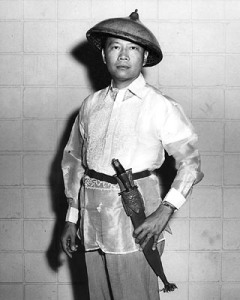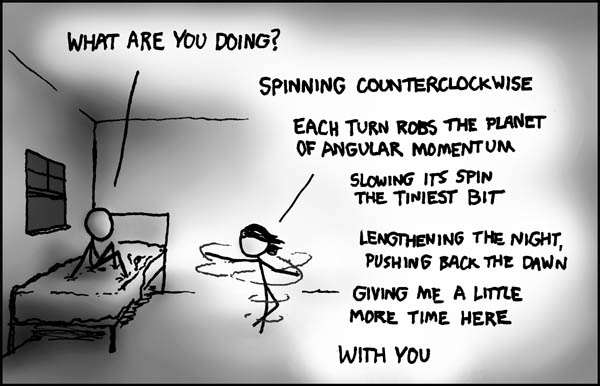I’m working on my scientific fiction book. I’ll be back in a while…
On Hiatus
Rare Disease Day 2014
A topic that should be on all scientists’ minds. What do we do about rare diseases?
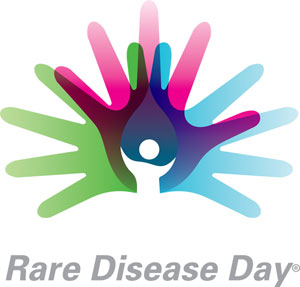 Tomorrow is
Rare Disease Day
. An annual awareness raising event for those living with rare diseases and the decision makers about the impact of these diseases on the patients lives.
Tomorrow is
Rare Disease Day
. An annual awareness raising event for those living with rare diseases and the decision makers about the impact of these diseases on the patients lives.
It’s to raise awareness to everyone, because we all come into contact with people who may not even look as though they have an illness, but actually be living with a pretty disabling rare disease.
I am one of those people living with a rare disease. Ehlers Danlos Syndrome.
I have found first hand how difficult it is to navigate the NHS system with such a diagnosis. It’s either not understood and discarded or maybe even believed to be more than I’m displaying to them at that time, so I’m dismissed. This shows a real lack of understanding.
The mascot within the Ehlers Danlos Community is that of the Zebra, because trainee Doctors are taught, that if they hear…
View original post 96 more words
It’s one little step after another, and finally, we end up as a culture, a civilization, an economy that has problems. The nature of a community is everyone compromises. The strength of this group of people is how they take those mitigating steps so more are satisfied than not.
We can all learn from the Philippines.
Why we are where we are
THE ELECTION season finds many Filipinos thinking not only of who should be the next president, but also of why the country – a nation of rich natural resources and talented people – can’t seem to get its act together, why it has fallen back.
To understand why the country is where it is today, we have to look back, even beyond our lands. After all, our country’s problems were created not just in the past decades. Neither was the country isolated from the rest of the world.
For starters, when our nation was born in the 19th century, it was already among the poor nations of the world, compared with European civilization which at that time made up the richest section of humanity. (more)
Scientists have struggled for over thirty years to market a DNA computer to the masses. It can play tic-tac-toe and solve the Traveling Salesman Problem (best way for a national sales guy to visit twenty-thirty cities–quite relevant to everyday people). Now the experts are considering using DNA computer apps to fight disease. But, for us middle Americans, we are far from benefiting from the power, affordability and tiny size of DNA computers.
Here’s a clever idea I stumbled across on MIT’s blog. We all know that the reason the brain can do so much is it relies on the folds that cover its surface. Technically, they’re not ‘folds’; they’re Gyri or Gyrus (singular) and the ‘valleys’ between the Gyri are called Sulci or Sulcus. Anyway, Mother Nature added these to give that umph to our brains in power, storage capacity and speed that no computer comes close to matching. Why not add them to DNA computers? Here’s a discussion:
DNA Origami for Faster, Smaller Computer Chips
Using DNA structures, researchers may be able to construct tinier, cheaper chips
Artificial, self-assembling DNA structures may help make smaller and cheaper microchips, according to research presented in the latest issue of Nature Nanotechnology. Tinier microchips would allow faster computers and other electronics.
Researchers from IBM and the California Institute of Technology used a technique known as DNA origami, where a long strand of DNA is folded into a shape with many shorter strands dubbed staples, creating a three-dimensional shape. In the paper, the researchers demonstrated using DNA origami-shapes as a scaffold for carbon nanotubes–a trick that could eventually be used to create nanoscale microchips.
The DNA structures are tiny enough to have features measuring six nanometers–the current industry standard for microchips is 45 nanometers. The process could replace the expensive tools manufacturers currently use to make tiny chips, although IBM suggests that it could take up to 10 years to test and refine the process for manufacturing.
Why Are People Right-handed?

Twining ivy
Plants are left or right-handed. Look at them. They grow toward one direction, not
necessarily due to the sun. You’re probably most familiar with plants that have tendrils, or twine their way up a post or fence. If you look more closely, you’ll notice that they form consistent right- or left-handed helices as they climb.
Non-human primates are balanced as far as handedness goes–some left, some right–as were Australopithecines. But when our genus Homo arrived, we became more likely right-handed.
Why? Take a guess before you read the article below. Defense? Hunting? Some requirement of balance with our upright position? Maybe a relationship between the right hand and left brain?
Read on.
The Origins of Handedness – Origins
Shared via AddThis
Scientists use electro-magnetic signatures to image an underground area up to 100 meters down. How? Every structure has a different magnetization from the surrounding natural ground. 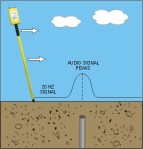 A magnetometer can distinguish the signature of the buried item from other underground objects like stones. Think of the striping discovered in the ocean floor which proved to scientists that the poles have switched: Iron in the molten crust extruded to create new ocean floor orients toward ‘north’ before solidifying. Surprisingly (not anymore, but back then), sometimes ‘north’ was ‘south’.
A magnetometer can distinguish the signature of the buried item from other underground objects like stones. Think of the striping discovered in the ocean floor which proved to scientists that the poles have switched: Iron in the molten crust extruded to create new ocean floor orients toward ‘north’ before solidifying. Surprisingly (not anymore, but back then), sometimes ‘north’ was ‘south’.
This technology transfers to urban traffic control. Magnetic sensors, buried under streets, sense the movement of vehicles and control traffic lights.
The military has used magnetic signatures for years, not only to identify submarines and ships, but to track the

MSF in Kings Bay
movement of trucks and caravans–anything with iron in it.
What are ‘magnetic signatures’? Any vehicle or vessel traveling on the Earth’s surface or under water disturbs the magnetic field. These disturbances are collected and analyzed by systems such as MAGSAV (The Magnetic Signature Analysis and Validation System). The Military has a database of these signatures as they relate to military vehicles–subs, cruisers, carriers, etc. It’s what allows our soldiers to identify who they’re dealing with in the field–friend or foe.
My concern is with Otto, my AI. By tying his computational powers into a MAD (magnetic anomaly detector) device, he can read these fluctuations. Because his detection algorithms are so sensitive, he can pick up even the magnetic signature of a human (created by the presence of iron in our blood). He can’t differentiate between people, but he can tell that a human is present.
I’m not sure where he’s going with this. He looked at metamaterials (with potential uses for cloaking devices–see my post here), and now he seems to be focused on submarines. Yes–I see the tie-in; millions of dollars are spent yearly minimizing the magnetic signature of subs so they can’t be located. When the magnetic level reaches a critical level, the sub returns to a port (such as Kings Bay) and it goes through the Magnetic Silencing Facility to minimize the signature and the possibility of detection (If you’re interested in how the Bad Guys use magnetic signatures to track our submarines, read this on anti-submarine warfare from Globalsecurity.org)
Cloaking devices, magnetic signatures… Let’s see where this goes.
The How and Why of Early Man
So many questions about our past are debated because of the lack of written records. Before man put proverbial pen to paper, we had only bones and teeth, soil contents, paleo-geology and -geography and -climate, to intuit what might have been.
This, despite the fact that we know for a fact that written records are always from the writer’s perspective. They are only trustworthy to the point we trust the writer–like a Leakey, Donald Johansson, Chris Beard, Jane Goodall. These interpretations–albeit highly trained–of primary sources (Earth’s record) are given more credibility than the primary source itself (an action I’m sure discouraged by Leakey’s and Johnasson’s and Beard’s and Goodall’s teachers as they pursued their research). Why? The reason is simple: It takes a PhD to interpret Earth’s story. Continue reading ‘The How and Why of Early Man’
9/11… We Remember
America, we love you.
Here’s a well-rounded list of books that will tell you the basics of mankind’s evolution from primate to modern man. It includes books on the paleoanthropology, archeology, paleo-everything, primate behavior, evolution of those features that characterize our human-ness and more. I’ve read every book on this list, keep most of them in my library. I wish I could read each one again for the first time:
-
Allen, E.A., The Prehistoric World: or, Vanished Races Central Publishing House 1885 -
Brown Jr., Tom, Tom Brown’s Field Guide: Wilderness Survival Berkley Books 1983 - Caird, Rod Apeman: The Story of Human Evolution MacMillan 1994
- Calvin, William, and Bickerton, Derek Lingua ex Machina: Reconciling Darwin and Chomsky with the Human BrainMIT Press, 2000
- Carss, Bob and Birch, Stewart The SAS Guide to Tracking Lyons Press Guilford Conn. 2000
- Cavalli-Sforza, Luigi Luca and Cavalli-Sforza, Francesco The Great Human Diasporas: The History of Diversity and Evolution Perseus Press 1995
- Conant, Dr. Levi Leonard The Number Concept: Its Origin and Development Macmillan and Co. Toronto 1931
- Diamond, Jared The Third Chimpanzee Harper Perennial 1992
- Edey, Maitland Missing Link Time-Life Books 1972
- Erickson, Jon Glacial Geology: How Ice Shapes the Land Facts on File Inc. 1996
- Fleagle, John Primate Adaptation and Evolution Academic Press 1988 Continue reading ’47 Must Read Books That Explain Human Evolution’
Does a Dog Have a Soul?
I don’t usually comment on religion, but this is priceless. If you’re agnostic or atheist, you may appreciate these even more than us religious folk:
Jacqui Murray is the author of the popular Building a Midshipman, the story of her daughter’s journey from high school to United States Naval Academy. She is webmaster for six blogs, an Amazon Vine Voice book reviewer, a columnist for Examiner.com and TeachHUB, Editorial Review Board member for Journal for Computing Teachers, Cisco guest blog, Technology in Education featured blogger, IMS tech expert, and a bi-monthly contributor to Today’s Author. In her free time, she is the editor of a K-8 technology curriculum, K-8 keyboard curriculum, K-8 Digital Citizenship curriculum, and creator of technology training books for how to integrate technology in education. Currently, she’s editing a thriller that should be out to publishers next summer. Contact Jacqui at her writing office or her tech lab, Ask a Tech Teacher.
Book Review: The Path
 The Path: A One-Mile Walk Through the Universe
The Path: A One-Mile Walk Through the Universe
by Chet Raymo
My rating: 4 of 5 stars
The Path: A One-Mile Walk Through the Universe, by Chet Raymo, is one of the most fascinating books you’ll ever read. Chet Raymo is a scientist, a thinker and a consummate inquirer. Everything excites him, draws his attention and I suspect threatens to distract him from his real job as professor emeritus of physics and astronomy at Stonehill College. Every morning, he walks to work along a course that covers approximately one mile. Having the type of mind he has, he can’t help but muse over every building, every smell, each part of his journey. It is in this book that he records his musings. Being a scientist with a passion for history, they are couched in the story of our Universe.He sees not just the upturned rock, but the forces that moved it to its current position and canted it at the odd angle. He sees not the flower by the stream, but its historic pilgrimage from Europe to its current home in New Hampshire. Continue reading ‘Book Review: The Path’
How to Add Time to the Day
Credit: xkcd comics
I love these guys.
Jacqui Murray is the author of the popular Building a Midshipman, the story of her daughter’s journey from high school to United States Naval Academy. She is webmaster for six blogs, an Amazon Vine Voice book reviewer, a columnist for Examiner.com and TeachHUB, Editorial Review Board member for Journal for Computing Teachers, Cisco guest blog, Technology in Education featured blogger, IMS tech expert, and a bi-monthly contributor to Today’s Author. In her free time, she is the editor of a K-8 technology curriculum, K-8 keyboard curriculum, K-8 Digital Citizenship curriculum, and creator of technology training books for how to integrate technology in education. Currently, she’s editing a thriller that should be out to publishers next summer. Contact Jacqui at her writing office or her tech lab, Ask a Tech Teacher.
Once Homo erectus left Africa and began his journey to the disparate biomes and habitats of the planet, he evolved from the phenotype that populated Africa 1.8 mya. His behavior adapted to new climates and that begat variations in tool use, food consumed and cultural norms. His group size, home base characteristics, survival techniques started to vary across the planet.
More than that, Homo erectus‘ (variously called Homo erectus, Homo ergaster and Homo antecessor depending upon where they lived) physical characteristics evolved to suit the environ, be it what we consider ancient China, Java, Dmanisi Georgia, Israel or Gran Dolina Spain. I’m sure man’s genotype remained within what would be considered Homo erectus, but culturally and physically, the bands differed greatly.
Let me take a step back for a moment. There is a difference of opinion as to when mankind’s ‘culture’ began. I spent quite a bit of time researching the definition of ‘culture’ as well as its roots without finding a definitive answer. Therefore, I’ll call the lifestyle elements that are based on environmental conditions like geology, geography, climate, ecosystems ‘culture’. From reading the research of the experts, I’ve come to believe our forebears developed ‘culture’ the moment they used their powers of reasoning to adapt their actions to their surroundings.
Why do I care about all this? Primarily, I am curious about my ancestors. Homo erectus is the first species of the genus Homo to portray the wanderlust so important to modern man’s occupation of every corner of the planet. Nothing seemed to stop him. He adapted, invented and survived. This is eerily familiar to modern man.
To better understand how these long-gone individuals lived their lives, I set out to tell their story a decade ago. What were their daily activities? How did Homo erectus survive the unforgiving hand of nature? What led to inventions like fire, clothing and Acheulian tool making (the latter arrived hundreds of thousands of years apart depending upon whether erectus lived in China or Israel. Why?) To make sense of these questions, I invented characters and dropped them into settings with crises I reasoned they likely would have faced in their world. This gave me the required elements of a paleo-historic novel.
Continue reading ‘How Did Homo erectus Differ as a Species 800,000 ya?’
The countries with the highest well-being tend to be the most peaceful and those with the lowest well-being are the least likely to be peaceful. The findings are from a new Gallup analysis revealing a strong relationship between Gallup’s life evaluation measure and two indicators of country stability.
Read more at GALLUP.com.
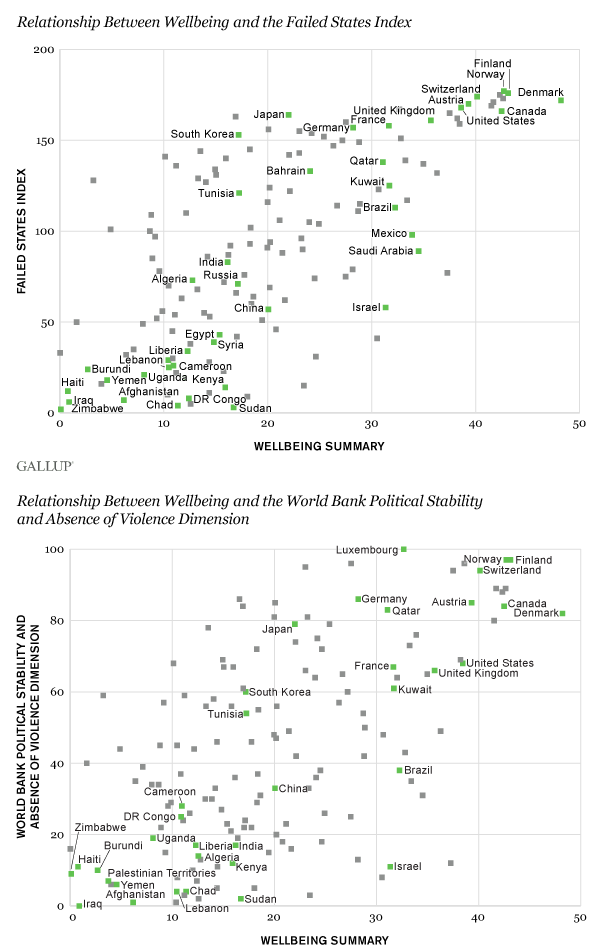 I’m sure the gun naysayers would be unhappy to see the US ranked higher on the ‘absence of violence’ graph than the United Kingdom with their tight gun control laws.
I’m sure the gun naysayers would be unhappy to see the US ranked higher on the ‘absence of violence’ graph than the United Kingdom with their tight gun control laws.
Overall, these conclusions are either self-evident or interesting. It depends upon which comes first–well-being or political stability. If people feel good about their government, they will not want to change it. That’s self-evident.
But is the corollary true: If government is stable, do people feel good about themselves? I don’t see evidence of that. Consider dictatorships.
Which begs the question, what is the definition of ‘stable’?
On a side note, one of my core beliefs is that man’s aggressive tendencies are fundamental to his survival. Throughout history, the more violent cultures have won out over their peaceful neighbors. Look at Athens and Sparta.Look at Hitler (short term, but no less destructive). The willingness to fight back, to defend ourselves with whatever means are available, the creativity to come up with new-fangled ways to protect our way of life is critical to our species. I don’t believe we want to breed that out of our genome.
_____________________________________________________________________________________________________________
Jacqui Murray is the author of the popular Building a Midshipman, the story of her daughter’s journey from high school to United States Naval Academy. She is webmaster for six blogs, an Amazon Vine Voice book reviewer, a columnist for Examiner.com and TeachHUB, Editorial Review Board member for Journal for Computing Teachers, Cisco guest blog, Technology in Education featured blogger, IMS tech expert, and a bi-monthly contributor to Today’s Author. In her free time, she is the editor of a K-8 technology curriculum, K-8 keyboard curriculum, K-8 Digital Citizenship curriculum, and creator of technology training books for how to integrate technology in education. Currently, she’s editing a thriller that should be out to publishers next summer. Contact Jacqui at her writing office or her tech lab, Ask a Tech Teacher.
 A Short History of Nearly Everything
A Short History of Nearly Everything
by Bill Bryson
My rating: 5 of 5 stars
So often scientific books lose us lay people with their PhD language. Not Bill Bryson. Using his infamous skill as a story-teller, he approaches the history of science with the same non-threatening approach John McPhee applied to the geology of America. Technicalities are dispensed with broad, non-pedagogic strokes while the surrounding humanity draws the reader into the intellectual excitement that is science. Readers can’t fail but want to read more.
Here are some of the topics he covers: Continue reading ‘Book Review: A Short History of Nearly Everything’
I’m writing a novel about paleo-historic man. As such, I’ve spent an inordinately long period of time researching early man. Here are some of the best quotes I’ve run across on the
evolution of our species:
- Future changes of any note will be in our minds, and what we do with them. –Phillip Tobias
- “But I’m not dancing alone,” he said. “I am dancing with the forest, dancing with the moon.” Then, with the utmost unconcern, he ignored me and continued his dance of love and life. The Forest People: A Study of the Pygmies of the Congo — Colin Turnbull
- Impossible is relative –Dr. Michio Kaku
- Man still bears in his bodily frame the indelible stamp of his lowly origin. –Charles Darwin
- When primeval man first used flint stones for any purpose, he would have accidentally splintered them, and would then have used the sharp fragments. From this step it would be a small one to break the flints on purpose and not a very wide step to fashion them rudely. –Charles Darwin, The Descent of Man
- Fossils are like truth. They are not where you look for them, but where you find them. –GHR Von Koenigswald
- I learnt from Flo how to be mother. Flo was patient, tolerant. She was supportive. She was always there. She was playful. She enjoyed having her babies, as good mothers do. –Jane Goodall, referring to a mother chimp she’d studied for years.
- Chimps are unbelievably like us – in biological, non-verbal ways. They can be loving and compassionate and yet they have a dark side… 98 per cent of our DNA is the same. The difference is that we have developed language – we can teach about things that aren’t there, plan for the future, discuss, share ideas… –Jane Goodall
- (Man’s) greatness does not consist in being different from the animals that share the earth with him, but in being…conscious of things of which his environment has no inkling. –GHR Von Koenigswald
- A society grows great when old men plant trees whose shade they know they shall never sit in. – Greek Proverb
- Words require little energy to produce; they are ‘cheap tokens’ and can be used with little or no risk or cost to deceive, just as easily as to inform. Body language is much more reliable for most animal purposes. — Derek Bickerton
- Continue reading ‘Great Quotes About the Evolution of Man’
 The Singing Neanderthals: The Origins of Music, Language, Mind, and Body
The Singing Neanderthals: The Origins of Music, Language, Mind, and Body
My rating: 4 of 5 stars
I have avoided this book in the past because my personal interest extends to an earlier time than Neanderthals, but I shouldn’t have. The title is misleading in that he extends to man’s earliest Homo habilis days, not those relatively-modern Homo neanderthalensis times. He explains the importance of music to man’s ability to use symbols, to express ideas without the vast lexicon we currently possess. He shares his definition of music as ‘human sound communication outside the scope of language’ (borrowed from Bruno Nettl) and describes a believable scenario for the co-evolution of music and language. All in all, a well thought-out book with lots of factually-based opinions.
 Despite that Al Gore declared this topic closed, there is much information that can be debated, with proof of global warming or cooling based on facts and science. Consider:
Despite that Al Gore declared this topic closed, there is much information that can be debated, with proof of global warming or cooling based on facts and science. Consider:
- We are living in an abnormally cool period since the earth’s average surface temperature for most of its history averaged 22 Celsius compared to the present 14 C.
- Ice ages occur at approximately 250-million-year intervals.
- Fossil evidence suggest that during the Mesozoic Era (230 to 50 million years ago) the earth was 10 C to 15 C warmer than today.
- One million years ago the current ice-age (Pleistocene) began.
- Glacial stages last more than 100,000 years and are interrupted by interglacial stages that last about 10,000 years.
- We are now living in an abnormally warm period compared to the earth’s average temperature for the last one million years (during which glaciation has prevailed).
- The current interglacial period has been subject to climatic changes on a smaller scale than the change from glacial to interglacial but still large enough to disrupt civilizations.
Jacqui Murray has been teaching K-8 technology for 15 years. She is the editor of a K-8 technology curriculum, K-8 keyboard curriculum, K-8 Digital Citizenship curriculum, and creator of technology training books for how to integrate technology in education. She is webmaster for six blogs, CSG Master Teacher, an Amazon Vine Voice book reviewer, Editorial Review Board member for Journal for Computing Teachers, Cisco guest blogger, a columnist for Examiner.com, featured blogger for Technology in Education, IMS tech expert, and a monthly contributor to TeachHUB. Currently, she’s editing a techno-thriller that should be out to publishers next summer. Contact Jacqui at her writing office or her tech lab, Ask a Tech Teacher.
 “…Homo erectus of 700,000 years ago had a geometrically accurate sense of proportion and could impose this on stone in the external world. In effect, without paper or ruler, mathematical transformations were being performed.” Mental Abilities of Early Man: A L0ok at Some Hard Evidence John A. J. Gowlett 1984, Academic Press, London
“…Homo erectus of 700,000 years ago had a geometrically accurate sense of proportion and could impose this on stone in the external world. In effect, without paper or ruler, mathematical transformations were being performed.” Mental Abilities of Early Man: A L0ok at Some Hard Evidence John A. J. Gowlett 1984, Academic Press, London
Jacqui Murray is the author of the popular Building a Midshipman, the story of her daughter’s journey from high school to United States Naval Academy. She is webmaster for six blogs, an Amazon Vine Voice book reviewer, a columnist for Examiner.com and TeachHUB, Editorial Review Board member for Journal for Computing Teachers, Cisco guest blog,Technology in Education featured blogger, IMS tech expert, and a bi-monthly contributor to Today’s Author. In her free time, she is the editor of a K-8 technology curriculum, K-8 keyboard curriculum, K-8 Digital Citizenship curriculum, and creator of technology training books for how to integrate technology in education. Currently, she’s editing a thriller that should be out to publishers next summer. Contact Jacqui at her writing office or her tech lab, Ask a Tech Teacher.

